1. Sending Christmas Postcards Instead of Cards
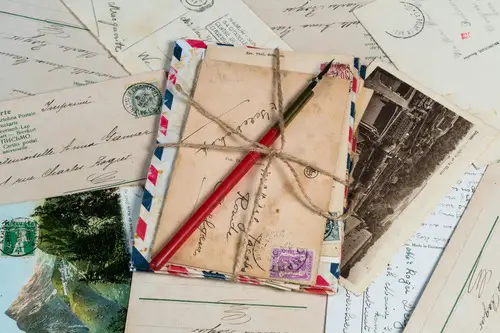
Before the convenience of folded Christmas cards, postcards were all the rage in the late 1800s and early 1900s. These cards were often ornately decorated with detailed illustrations, from snowy landscapes to cheerful holiday scenes. Unlike today’s cards with personal messages inside, these postcards left little room for anything beyond a quick “Merry Christmas.” The effort and artistry made them cherished keepsakes. Many people displayed their collections prominently on mantelpieces or walls.
Now, in the age of digital greetings and photo cards, these vintage postcards are a charming relic of the past. Their nostalgic appeal remains, reminding us of a time when sending holiday wishes was a more elaborate and personal affair. Smithsonian Magazine highlights the historical significance of these early holiday greetings, emphasizing their role in spreading festive cheer.
2. Making Your Own Ornaments

Back in the day, Christmas trees were decorated with handmade ornaments crafted from whatever materials were available, like paper, straw, and even salt dough. Families would spend evenings together creating garlands from popcorn or cranberries and fashioning small trinkets to hang on the tree. This practice not only added a personal touch to the holidays but also brought families closer during the festive season. The creativity and effort behind each ornament made decorating the tree a cherished family tradition.
Nowadays, store-bought baubles and pre-lit trees have replaced much of this hands-on tradition. History Extra delves into how these practices shaped early Christmas celebrations, highlighting how the homemade approach fostered a sense of community. While beautiful, modern ornaments don’t quite carry the same sentimental value as those crafted by hand.
3. Caroling Door-to-Door
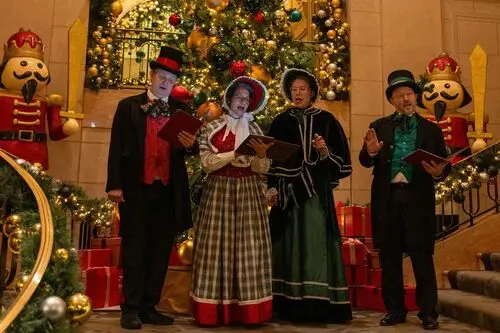
Caroling was once a cherished tradition where groups of friends, families, or even strangers would gather and walk through neighborhoods singing holiday songs. It was more than just music; it was a way to spread cheer and connect with the community. People often opened their doors to offer warm drinks or treats as a thank-you for the carolers’ time and effort. These spontaneous visits brought people together, creating a sense of belonging and festive spirit.
Today, with busier lifestyles and colder receptions, this tradition has largely faded. You might catch a few organized groups at malls or events, but the spontaneous joy of carolers at your doorstep is a rare sight. The Library of Congress offers fascinating insights into the origins of caroling traditions, showing how they evolved from a communal activity to a more organized and public affair.
4. Burning the Yule Log
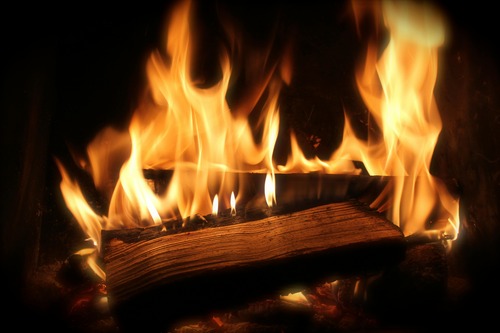
The Yule log was more than just a dessert; it was an actual log burned in the fireplace as part of an ancient winter solstice tradition. Families would select a large piece of wood, sometimes decorated with greenery, and light it on Christmas Eve. It was meant to burn for 12 hours, symbolizing good fortune for the coming year. The log would be carefully tended throughout the night, and its embers were believed to bring protection and prosperity.
This practice has been replaced by its edible namesake or decorative versions in modern holiday decor. However, the warmth and meaning behind the ritual still resonate in today’s celebrations. The tradition reminds us of the enduring connection between Christmas and the winter solstice, a time for renewal and hope.
5. Watching Live Nativity Plays
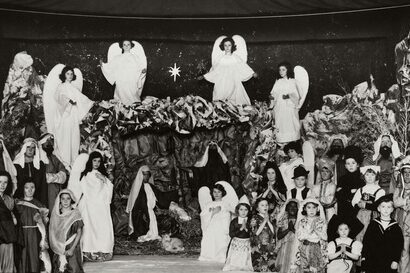
Centuries ago, live nativity plays were the heart of Christmas celebrations, especially in small towns and villages. Local residents took on the roles of Mary, Joseph, and the Wise Men, often accompanied by real animals for authenticity. These performances brought the Christmas story to life, creating a deep connection to its spiritual roots. They were an important part of the holiday experience, fostering a sense of community and reverence for the season.
While some churches and communities still stage these events, they’ve largely been replaced by holiday pageants and church concerts. Watching a live nativity today feels like stepping back in time, evoking a sense of nostalgia for a simpler, more intimate Christmas celebration. These performances were not only spiritual but also communal, creating lasting memories for those who participated and attended.
6. Hiding a Silver Coin in the Christmas Pudding
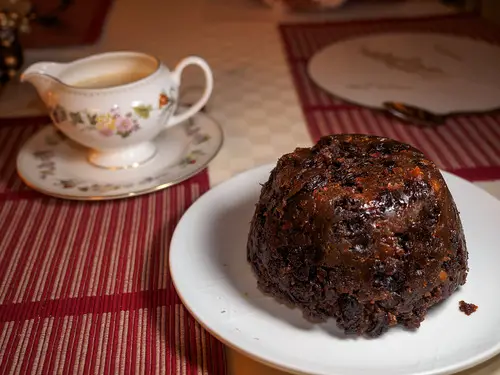
A Victorian-era Christmas tradition involved hiding a silver coin in the Christmas pudding. The lucky person who found the coin in their slice was said to have good fortune for the coming year. This playful practice turned dessert into an exciting event, where everyone eagerly anticipated the moment of discovery. The tradition added an extra layer of excitement to the holiday feast, bringing joy and good-natured competition.
However, concerns about safety and the decline in traditional Christmas pudding recipes have made this custom a rarity. BBC Good Food explores the history and evolution of this festive dessert, showing how it has transformed over the years. Despite its decline, the tradition remains a fun reminder of how even small rituals can add a touch of magic to the season.
7. Wassailing for Good Health and Fortune
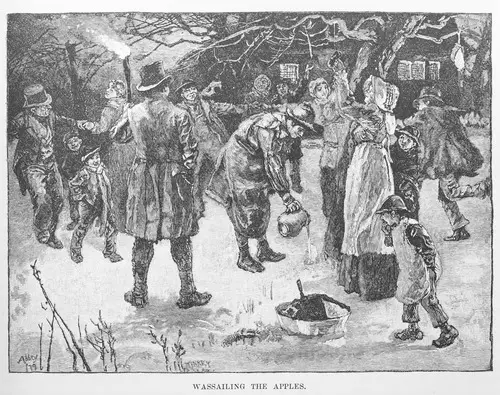
Wassailing was an ancient custom that combined singing, drinking, and blessing orchards or homes. Groups would travel door-to-door with a large bowl of spiced cider or ale, offering it to neighbors while singing traditional songs. In return, they received food or more drinks. Wassailing was a way of bringing people together, spreading good wishes for health, prosperity, and good fortune in the new year.
In return, the practice of wassailing has largely faded in modern times. While modern-day toasts and parties echo its essence, the original form of wassailing has all but disappeared. The spirit of the tradition remains, however, as people continue to gather during the holidays to share good cheer and wishes for health and happiness.
8. Telling Ghost Stories by the Fire
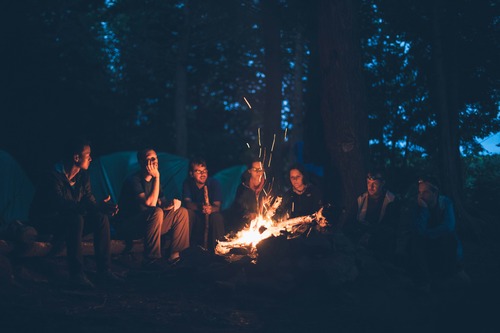
Long before Christmas was synonymous with joy and cheer, it was also a time for eerie tales. Victorian families would gather around the fire and share ghost stories during the long winter nights. These stories were meant to thrill and entertain, often with moral lessons woven into the spine-chilling narratives. The chilling atmosphere created by these tales became a beloved part of the holiday season, with each story building on the anticipation of the next.
Think of Dickens’ A Christmas Carol as a prime example of this tradition. Nowadays, the focus has shifted to feel-good movies and lighthearted tales, leaving this spooky custom behind. The tradition of telling ghost stories has been largely replaced with family-friendly movies and cheerful anecdotes, but the echoes of those chilling tales remain part of Christmas lore.
9. Hosting a Twelfth Night Feast
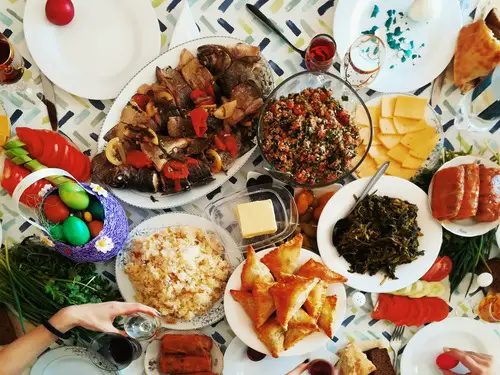
The Twelfth Night, marking the end of the 12 days of Christmas, was once celebrated with grand feasts and merrymaking. This tradition included elaborate meals, games, and even crowning a “Lord of Misrule” to oversee the festivities. It was a time for indulging before the season officially came to a close, with revelers savoring the last moments of the holiday cheer. The feast was a lively and joyful occasion, bringing families and communities together.
Over time, the significance of Twelfth Night has waned, with most people wrapping up their celebrations by New Year’s. Yet, its remnants live on in the idea of savoring the last moments of the holiday season. The tradition might have evolved, but the sense of enjoying the final days of Christmas remains central to how we wrap up the holiday festivities.
10. Gifting Oranges and Nuts
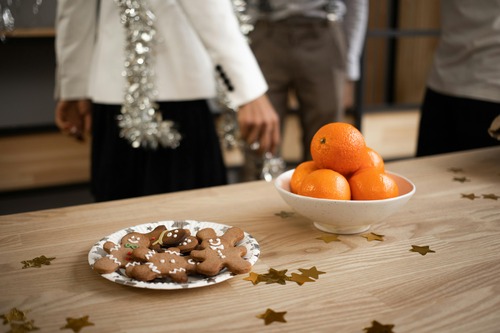
In the days when exotic fruits were a luxury, receiving an orange in your stocking was a special treat. Paired with a handful of nuts, this simple gift symbolized prosperity and health. Children eagerly awaited the arrival of these festive gifts, savoring every bite of the sweet citrus. The humble orange, once a rare and valuable item, became a symbol of abundance and good fortune during the holiday season.
Today, stockings are often filled with toys, gadgets, and candy, making the humble orange feel outdated. Yet, its history serves as a reminder of how simple joys once held great meaning. This nostalgic gift reflects a time when even the smallest treats were deeply cherished as symbols of prosperity and well-being.
11. Decorating with Real Candles

Before electric lights became standard, Christmas trees were illuminated with real candles. This made for a breathtaking sight but came with obvious risks, as fires were a common hazard. Families had to watch their trees closely, lighting the candles for short periods and keeping a bucket of water nearby. The glow from the candles created a magical atmosphere, one that made the holiday feel even more special.
While modern string lights are safer and more convenient, they lack the enchanting glow of those flickering candle-lit trees. The practice is now mostly confined to nostalgic reenactments or carefully controlled settings. Despite the safety concerns, the tradition of decorating with real candles remains a cherished memory for many, evoking a sense of wonder and beauty.
12. Dressing Up for Christmas Dinner
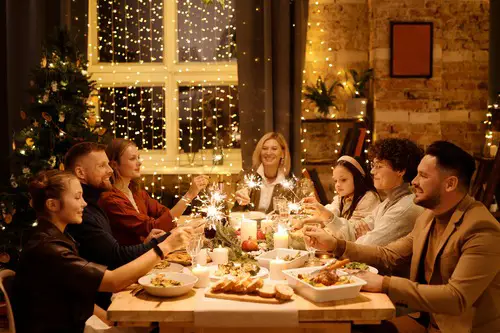
Once upon a time, Christmas dinner was a formal affair, complete with starched collars, dresses, and even gloves. Families took great care to dress their best, honoring the meal as a centerpiece of the holiday. This tradition emphasized the importance of togetherness and respect for the occasion. Everyone would gather at the table in their finest clothes, making the meal feel like a special event.
Over the years, the trend has shifted to more casual and cozy celebrations, with many opting for pajamas or festive sweaters. While the relaxed atmosphere has its charm, some may miss the elegance of dressing up for the holiday table. The change in attire reflects broader shifts in holiday customs, but the spirit of togetherness remains at the heart of the Christmas dinner experience.
